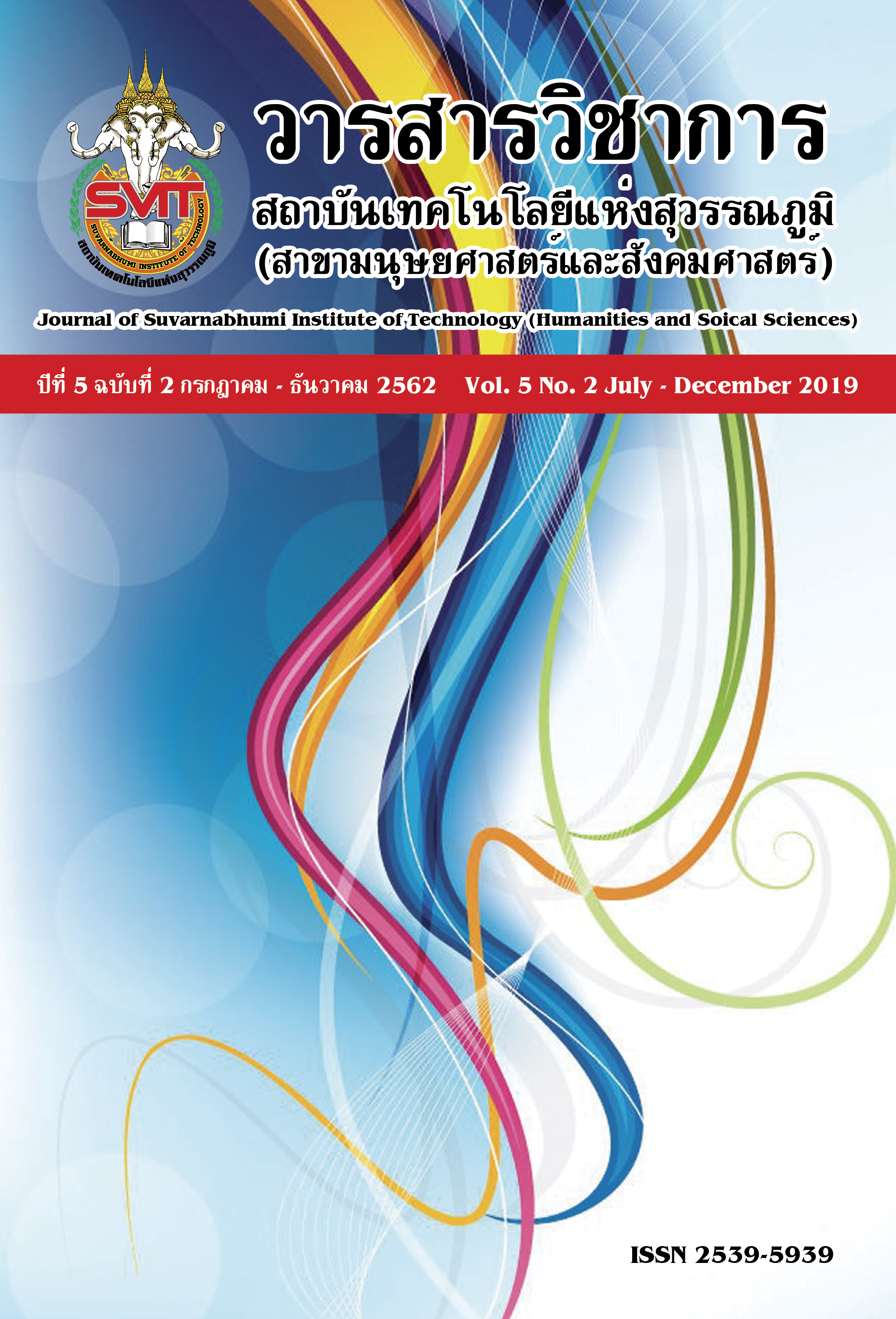THE SKILLS OF THE 21ST CENTURY AS PERCEIVED BY NURSING GRADUATES AND SUPERVISORS, NURSING COLLEGE IN THE CENTRAL NETWORK 1, PRABOROMARAJCHANOK INSTITUTE
Keywords:
Twenty first century skills, nursing graduatesAbstract
The purpose of this descriptive study was to study the skills of the 21 century of nursing graduate perceived by the graduates and their supervisors. Two groups of samples have participated in this research. The first group consists of nursing graduates who graduated from 3 nursing colleges in Central Network 1, Praboromarajchanok Institute in Academic Year BE. 2557. The second group is senior nurses who supervise nursing graduates. Data was collected by the century 21 skills questionnaire for nursing graduates. The data were analyzed using descriptive statistics, t-test and One-way ANOVA. The results showed that.
- The research findings revealed that total average mean score of 21st century skills of graduate nurses and supervisors were consistency at a good level. Both of nursing graduates and supervisors perceived Career and Learning Skills is the highest mean score. The lowest mean score that nursing graduates perceived was the category of 3Rs-Reading, (w) Riting, (a) Rithmetic) while supervisors perceived that Creativity and Innovation was the lowest mean score.
- The perception of the century 21 skills of nursing graduates in each college differ statistically significant at the .05 level.
References
ดวงกมล ทองอยู่. (2557). แนวทางการพัฒนาการเห็นคุณค่าในตนเองของวัยรุ่นตามทฤษฎีการรับรู้ความสามารถของตน. วารสารวไลยอลงกรณ์ปริทัศน์, 4(2), 179-196.
นิภา แย้มวจี. (2548). การใช้ประโยชน์จากแหล่งการเรียนรู้ในสถานศึกษา. ค้นจาก http://www.moe.go.th /moe/th/news/detail.php?NewsID=13755&Key=hotnews
ปานเพชร ชินินทร และวิเชษฐ์ พลายมาศ. (2553). การศึกษาปัจจัยความสำเร็จของการจัดการศึกษาเชิงบูรณาการกับการทำงานสำหรับอุดมศึกษาไทย (Work integrated Learning: Wil)”. ใน การประชุมวิชาการมหาวิทยาลัยเกษตรศาสตร์วิทยาเขตกําแพงแสน ครั้งที่ 7 (น. 1056-1063). กรุงเทพฯ: มหาวิทยาลัยเกษตรศาสตร์ วิทยาเขตกำแพงแสน คณะวิทยาศาสตร์ และสิ่งแวดล้อม
วิภาดา คุณาวิกติกุล. (2558). การเรียนการสอนสาขาพยาบาลศาสตร์ ในยุคศตวรรษที่ 21. พยาบาลสาร,42(2),152-156.
วิไลวรรณ ทองเจริญ, ช่อทิพย์ สันธนะวนิช, สกุลรัตน์ เตียววานิช, พัสมณฑ์ คุ้มทวีพร, วิไลพรรณ สมบุญตนนท์
ศุภาวดี วายุเหือด, กาญจนา ครองธรรมชาติ, พิจิตรา เล็กดํารงกุล และกลิ่นชบา สุวรรณรงค์. (2556). ผลการเรียนรู้การจัดการศึกษาเชิงบูรณาการกับการทํางานในวิชาปฏิบัติเสริมทักษะการพยาบาลต่อความพร้อมในการประกอบวิชาชีพของนักศึกษาพยาบาล. วารสารพยาบาลศาสตร์, 31(4), 79-89.
วีระศักดิ์ พุทธาศรี และวณิชา ชื่นกองแก้ว. (บรรณาธิการ). (2560). รายงานการประชุมวิชาการประจำปีระดับชาติ “การพัฒนาการศึกษาสำหรับบุคลากรด้านสุขภาพ”. พี เอ ลิฟวิ่ง: กรุงเทพ.
สำนักงานเลขาธิการสภาการศึกษา. (2561). สภาวะการศึกษาไทยปี 2559/2560 แนวทางการปฏิรูปการศึกษา
ไทยเพื่อก้าวสู่ยุค Thailand 4.0. พริกหวานกราฟฟิค: กรุงเทพ.
สิริชัย ดีเลิศ, ปานใจ ธารทัศนวงศ์ และสมนึก เอื้อจิระพงษ์พันธ์. (2560). ความคิดสร้างสรรค์ของบัณฑิตในสถาบันการศึกษาระดับอุดมศึกษาที่มีอัตลักษณ์เชิงสร้างสรรค์. วารสารการจัดการ มหาวิทยาลัยวลัยลักษณ์, 6(1),16-25.
Bandura, A. (1997). Self –efficacy. New York: W.H. Freeman.
Bezt, N. E. (1992). Counseling uses of career self‐efficacy theory. The Career Development
Quarterly, 41(1),22-26.
Gatzke, H. & Ransom, J. E. (2001). New skills for a new age: Preparing nurses for the 21st century. Nursing Forum, 36(3), 13-17.
Trilling, B. & Fadel, C. (2009). Learning and innovation skills: 21st century skills learning for life in our times. San Francisco: Jossey-Bass.
Downloads
Published
Issue
Section
License
บทความที่ได้รับการตีพิมพ์เป็นลิขสิทธิ์ของวารสารวิชาการ สถาบันเทคโนโลยีแห่งสุวรรณภูมิ
ข้อความที่ปรากฏในบทความแต่ละเรื่องในวารสารวิชาการเล่มนี้เป็นความคิดเห็นส่วนตัวของผู้เขียนแต่ละท่านไม่เกี่ยวข้องกับสถาบันเทคโนโลยีแห่งสุวรรณภูมิ และคณาจารย์ท่านอื่นๆในสถาบันฯ แต่อย่างใด ความรับผิดชอบองค์ประกอบทั้งหมดของบทความแต่ละเรื่องเป็นของผู้เขียนแต่ละท่าน หากมีความผิดพลาดใดๆ ผู้เขียนแต่ละท่านจะรับผิดชอบบทความของตนเองแต่ผู้เดียว





